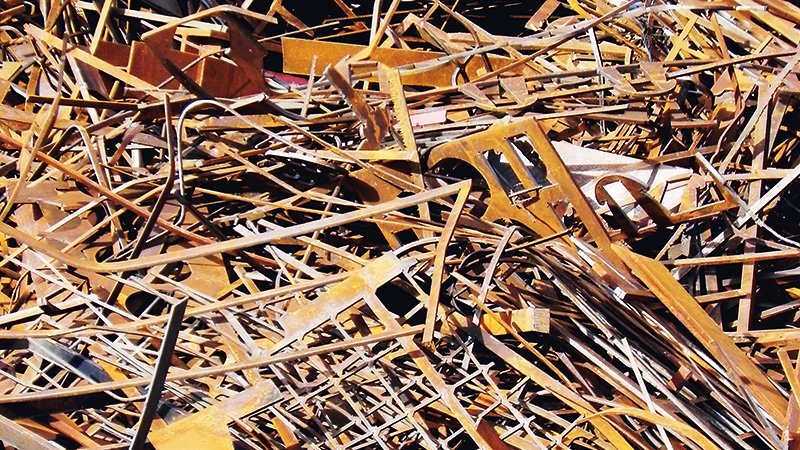In metal recycling facilities, machines are monstrosities crushing, pulling, and baling huge chunks of metal. This can give the appearance of indestructibility to this equipment, but that is not true. Even metal recycling equipment has the need to be properly maintained.
The first step toward proper maintenance is the institution of a recycling equipment maintenance strategy.
Identify and understand the equipment
Proper maintenance starts with knowing the equipment you are performing maintenance upon. There are large, hulking pieces of machinery in scrapyards everywhere, churning out bales of metal. But at the heart of this activity is a pneumatic or hydraulic operated machine that operates like every other machine in manufacturing and production. The key is to understand the machine’s operation and the breakdown of the moving parts.
Briquetters, for instance, will need the standard hydraulic machinery preventative maintenance plan. Hoses, fittings, o-rings, lubrication cycles, and all other wear and tear items will need their cycle of maintenance. Your machine’s manufacturer will be able to provide an owner’s guide laying out the proper maintenance schedule for that particular equipment piece. Gather your equipment manuals and plan the initial service point plan for the machinery. This is the date that your preventative maintenance plan will begin. From that date forward, you’d want to identify your service intervals according to the manufacturer’s guidelines.
Identify and gather the necessary PM parts
To perform preventative maintenance on your equipment, you will need more than your toolbelt. Tooling in a briquette machine should be replaced either annually, or biannually, depending on operating hours. Tooling wears and will become ineffective over time, but it is impossible to PM a briquetter without replacing the tooling.
Order your replacement tooling, schedule the replacement date with your maintenance team, and plan to perform all the recommended annual maintenance. Once you have the machine torn down, it is common sense to perform every item on the annual maintenance list while you are replacing the tooling.
The point of preventative maintenance is to try to encapsulate all the „what if’s“. By replacing any item showing wear while you are addressing the other items, you can rebuild a machine that is completely on spec when the power button is pressed.
Identify any emergency maintenance items
You may have a machine that everyone on the site knows will shut down when it starts getting warm, or that you cannot run over a 6-hour span. These are the known maintenance problems. And it doesn’t matter how many times you change the o-rings on a machine if the problem is a wiring issue.
Without replacing the parts that can cause major mechanical failure, you cannot have a piece of equipment that’ll run to its full capacity. It is imperative to identify these „problem“ pieces and get a plan in place to begin addressing the major mechanical problems that are costing your facility in lost production and downtime by placing band-aids on the real problem.
Schedule your preventative maintenance, and stick to it
Performing one preventative maintenance cycle, then throwing out the PM plan and having a sporadic maintenance schedule is not going to help. If you aren’t sticking to the PM plan, you may as well be doing only reactive maintenance as your machines break down. The reason you have a PM schedule is that the parts that are being replaced are only supposed to be used for an exact period. If the manufacturer states that the seals need to be replaced every 90 days, it is because the studies and real-life applications have shown that those seals will likely start to blow after being in place for 90 days.
You cannot expect a preventative maintenance program to show any results if you do not stick to the schedule. It is not going to immediately save you all your maintenance budget, but you will immediately begin to see fewer breakdowns and less downtime. By constantly maintaining the small elements of a breakdown, you prevent catastrophic breakdowns. It takes a lot of little problems to cause your machine to shut down and refuse to go any further. Tend to those small elements, and your machine can continue to push through.
Do not ignore the findings in a teardown
Just as the tooling replacement is the perfect opportunity to replace all the recommended annual maintenance items, all teardowns are the perfect time to inspect your machinery and address worn, broken, or near-end of spec parts. If you already have a 12-hour teardown in place, and a part only has another 30 days left on its lifespan, it is not good sense to tear it down again in 30 days to replace the part. Think of your PM plan as the deadline to perform the maintenance tasks. Your ultimate goal is to have the maintenance performed by that date, without fail, every time. Apply good sense to the program and combine time-consuming or labor-intensive tasks to keep the costs and downtime to a minimum.
Finally, don’t think of your PM program as a cost or hassle. It is in place to save you time, money, and labor. If you think of the PM program as an asset to your facility instead of expenditure, actively looking for ways to improve the preventative maintenance tasks at your facility, you will find the program simply pays for itself in both costs and downtime.











